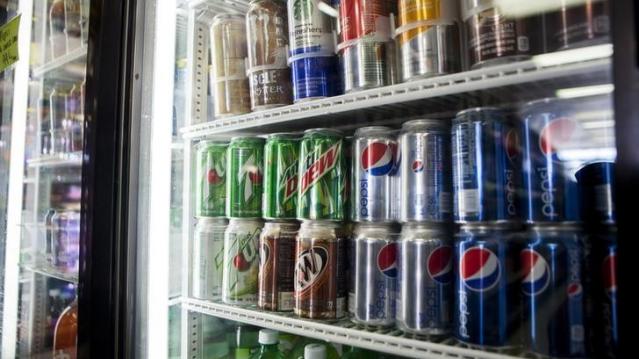Tiny Bubbles, Big Business: How Seltzer Became the Hot New Drink

Struggling to decide between healthy but boring water and sweet, sugary soda, Americans are increasingly turning to fizzy water to quench their thirst.
Although soda remains the leader in the soft drink category, soda consumption has fallen for the 10th year in a row, to the lowest level since 1986, according to The Wall Street Journal. Americans have been dropping sugary soda for years due to health concerns, but lately even diet soda has been losing popularity over worries about artificial sweeteners.
Sales of fizzy water — the category includes such well-known brands as Perrier and San Pellegrino — have grown to about $1.5 billion a year, more than doubling since 2010, according to data from industry research firm Euromonitor quoted in The Washington Post.
Related: How Coke Beat Pepsi in the New Cola Ad War
One of the top new brands is National Beverage’s LaCroix Sparkling Water, whose dozen flavors of bubbly H20 seem to be aimed at millennials in particular. The brand’s bright, colorful cans convey an alternative vibe, and the drink’s Instagram is loaded with attractive young people hoisting a can at pools, beaches and other relaxing places.
National Beverage credited sparkling water as the main factor that grew the company’s stock 75 percent over the last five years. Sales of the LaCroix brand alone have grown to $175 million, almost tripling since 2009.
Another rapidly growing brand, Sparkling Ice, owned by Talking Rain Beverage Company, saw sales boom to more than $384 million in 2014 from $2.7 million in 2009.
Gary Hemphill, managing director and COO of research at Beverage Marketing, sees the sales of seltzer and sparkling water only increasing as consumer demand for healthier refreshments grows.
Number of the Day: $132,900

The cap on Social Security payroll taxes will rise to $132,900 next year, an increase of 3.5 percent. (Earnings up to that level are subject to the Social Security tax.) The increase will affect about 11.6 million workers, Politico reports. Beneficiaries are also getting a boost, with a 2.8 percent cost-of-living increase coming in 2019.
Photo of the Day: Kanye West at the White House

This is 2018: Kanye West visited President Trump at the White House Thursday and made a rambling 10-minute statement that aired on TV news networks. West’s lunch with the president was supposed to focus on clemency, crime in his hometown of Chicago and economic investment in urban areas, but his Oval Office rant veered into the bizarre. And since this is the world we live in, we’ll also point out that West apparently became “the first person to ever publicly say 'mother-f***er' in the Oval Office.”
Trump called Kanye’s monologue “pretty impressive.”
“That was bonkers,” MSNBC’s Ali Velshi said afterward.
Again, this is 2018.
Chart of the Day: GDP Growth Before and After the Tax Bill

President Trump and the rest of the GOP are celebrating the recent burst in economic growth in the wake of the tax cuts, with the president claiming that it’s unprecedented and defies what the experts were predicting just a year ago. But Rex Nutting of MarketWatch points out that elevated growth rates over a few quarters have been seen plenty of times in recent years, and the extra growth generated by the Republican tax cuts was predicted by most economists, including those at the Congressional Budget Office, whose revised projections are shown below.
Are States Ready for the Next Downturn?

The Great Recession hit state budgets hard, but nearly half are now prepared to weather the next modest downturn. Moody’s Analytics says that 23 states have enough reserves to meet budget shortfalls in a moderate economic contraction, up from just 16 last year, Bloomberg reports. Another 10 states are close. The map below shows which states are within 1 percent of their funding needs for their rainy day funds (in green) and which states are falling short.
Chart of the Day: Evolving Price of the F-35

The 2019 National Defense Authorization Act signed in August included 77 F-35 Lightning II jets for the Defense Department, but Congress decided to bump up that number in the defense spending bill finalized this week, for a total of 93 in the next fiscal year – 16 more than requested by the Pentagon. Here’s a look from Forbes at the evolving per unit cost of the stealth jet, which is expected to eventually fall to roughly $80 million when full-rate production begins in the next few years.



